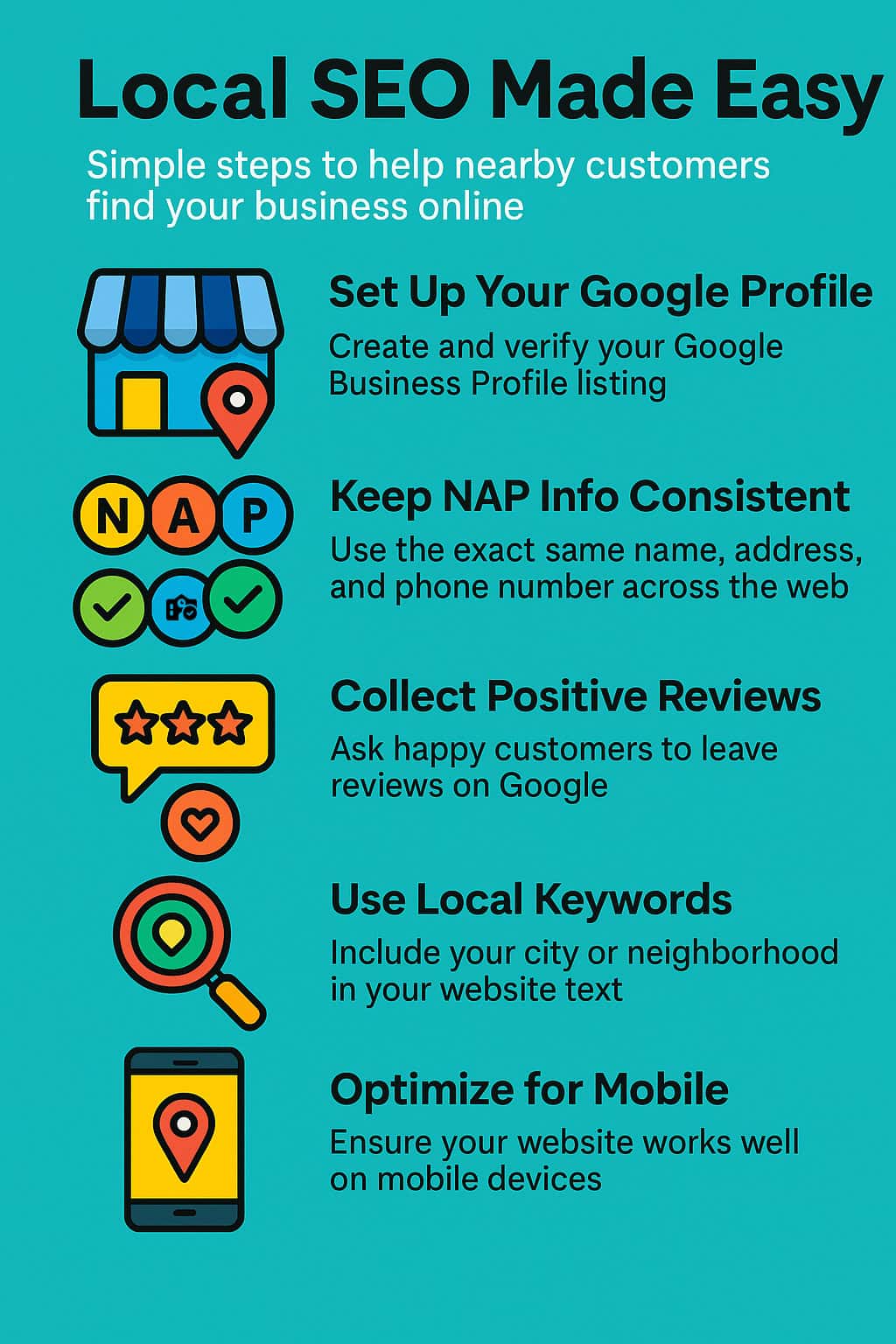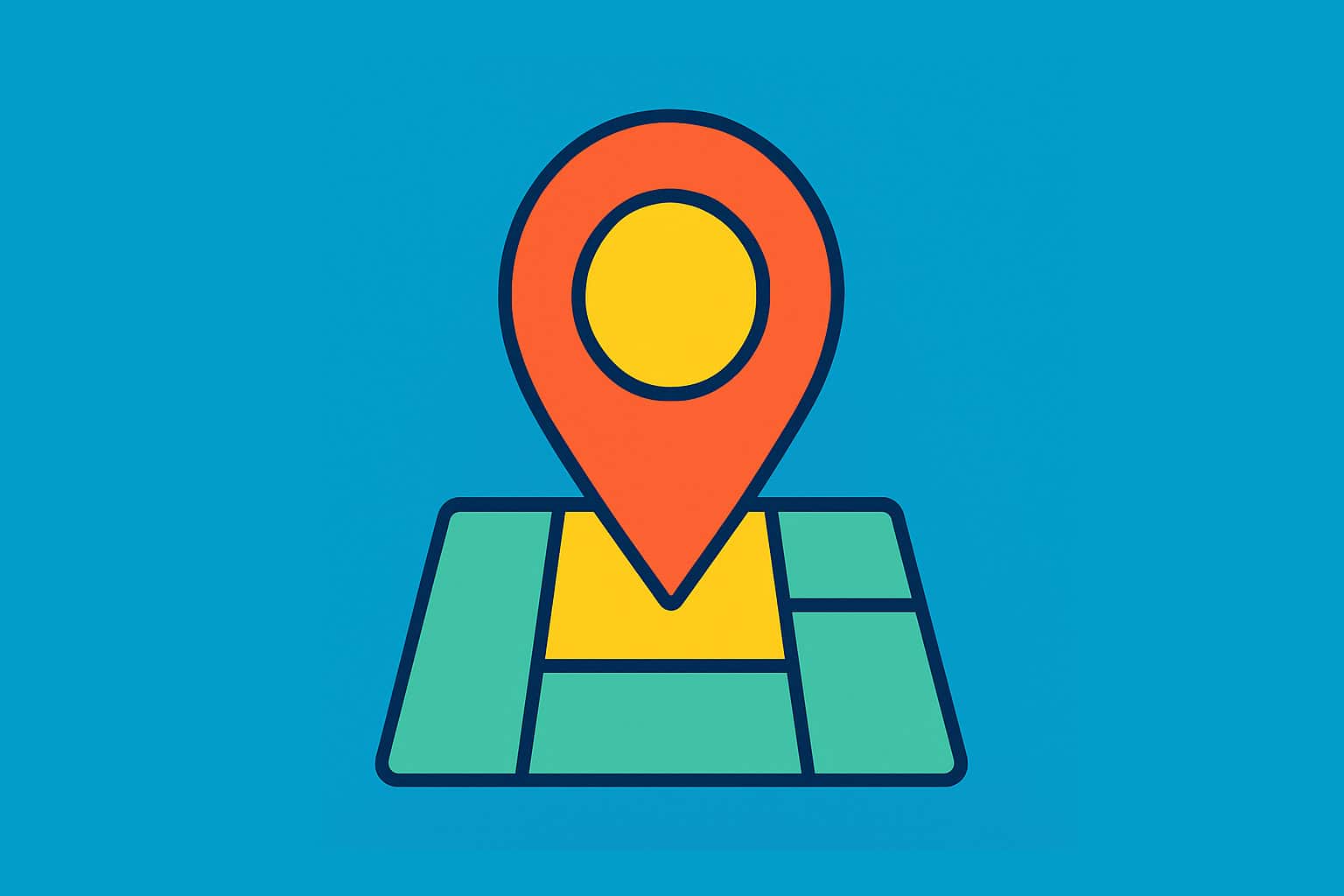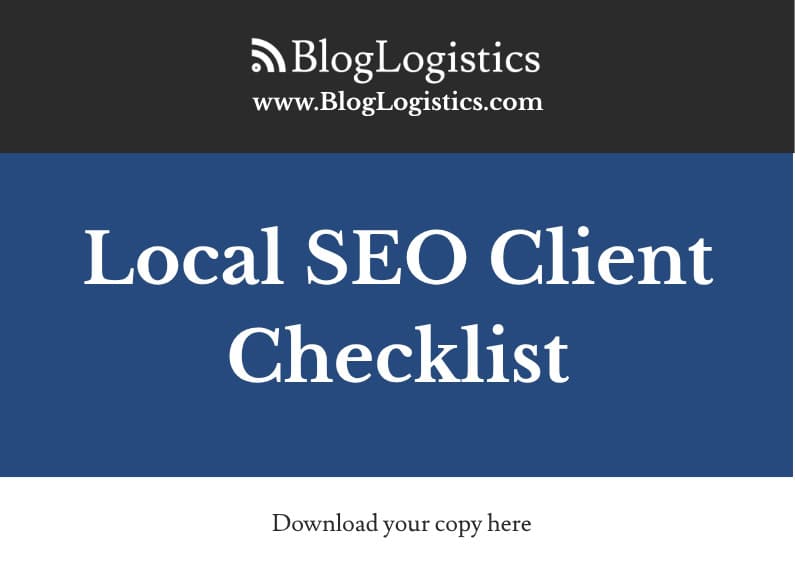Key Takeaways
Local SEO means making your business visible where people search most, on phones and by voice. To rank higher in your neighbourhood, keep your Name, Address, and Phone (NAP) consistent everywhere, optimize your Google Business Profile, use local keywords, earn genuine reviews, and ensure your site is mobile-friendly. Add in voice-search readiness and backlinks from local sources, and you’re well on your way to getting found by nearby customers. Let’s Chat if you want help getting set up right.
If you’ve ever searched “Ikea near me” on your phone, you’ve used local SEO. In 2025 more than 70% of these location-based searches now happen on mobile devices, and voice queries like “Hey Siri, best pizza on Main Street” are rising fast. In this intro guide I’ll show you how to claim that local spotlight with a consistent NAP (Name-Address-Phone), ethical review gathering, and smart, neighbourhood-flavoured keywords. Follow these steps and it’ll help you pop up when nearby customers need you most.

Nail the Basics: Consistent N-A-P Everywhere.
Why it matters.
Search engines cross-check your Name, Address, Phone on your site, Google Business Profile (GBP), and directories. Even tiny mismatches can dent trust and rankings.
Quick action list:
Update old listings on Yelp, Facebook, Yellow Pages, etc. (Tip: Moz Local’s free checker highlights mismatches).
Use the exact same spelling and punctuation everywhere.
Add your NAP in the footer of every page.
Optimise Your Google Business Profile (GBP).
2025 Must-Dos.
- Complete every field, especially services, hours, and description with local keywords (“bookstore in Queen Street Toronto”).
- Upload geotagged photos (your phone auto-tags location).
- Post offers or updates weekly, Google sees fresh content as a quality signal.
- Turn on messaging so mobile users can text you directly from search results.
Mobile-First & Voice Search: Speak Your Customers’ Language.
Trend | What to Do | Example |
Mobile dominance | Check your site on a phone: text 16 px+, buttons thumb-sized, pages load < 3 s. | Add a sticky “Call Now” button. |
Voice queries | Write FAQs that answer conversational questions. | “How late are you open on Saturdays?” |
Proximity signals | Embed a Google Map and list nearby landmarks. | “Across from Pineview Library.” |
Use Local Keywords That Feel Natural.
- Combine service + neighbourhood: “emergency avian vet Markham”.
- Sprinkle keywords in page titles, H2s, image alt text, and meta descriptions, not every sentence.
- Write location-flavoured blog posts: “Top 5 kid-friendly parks in Whitby (and snacks nearby)”.
Collect Reviews Ethically, and Reply Fast.
Step | Why | How |
Ask at the right moment | Happy customers are keen to help. | “Glad you loved the repair job, would you mind leaving a quick Google review?” |
Make it easy | Fewer clicks = more reviews. | Share your GBP review link by text or QR code at checkout. |
Reply to every review | Shows you care and boosts ranking signals. | Thank positives, address negatives politely, never argue. |
Avoid fake reviews | Google can delete them and penalise you. | Stick to genuine customer feedback only. |
Build Hyper-Local Backlinks.
- Sponsor a youth sports team; get listed on the league website.
- Join your Chamber of Commerce or BIA (business improvement area) directory.
- Offer a guest blog post to a neighbourhood newspaper or popular local blogger.
- Host or co-host community events (link from the event page).
Track What’s Working, and Pivot.
Metric | Tool | Good Sign |
Local keyword rankings | BrightLocal, Goodle Search Console | Moving up or holding top-3 spots. |
GBP interactions | GBP Insights | More calls, map requests, and website visits. |
Mobile speed | PageSpeed Insights | LCP under 2.5 s. |
Review growth | Google & Yelp dashboards | Steady increase, 4 ★+ average. |
Pro tip: Check monthly; adjust pages or posts that slip.
Red Flags to Avoid.
- Letting your NAP drift on old social profiles.
- Stuffing every paragraph with “near me” keywords.
- Buying bulk reviews.
- Ignoring duplicate listings (can split ranking power).
Local SEO (in 2025) is all about mobile convenience, conversational search, and neighbourhood relevance. Get your NAP consistent, polish your Google Business Profile, earn genuine reviews, and speak the same language your customers use on their phones and smart speakers. The payoff? More foot traffic, phone calls, and bookings, right from your backyard.
Want hands-on help fine-tuning your local SEO (plus daily WordPress backups and plugin updates)?
👉 Let’s chat and help make sure your neighbours find you first.
FAQs: Local SEO Made Easy for Small Business Owners.
What is local SEO and why should I care?
Local SEO helps your business show up in Google when people nearby search for what you offer, like “bakery near me” or “plumber in [your town].” It gets more customers through your door (or calling your phone) without needing ads.
How do I know if my business has local SEO already?
If you have a Google Business Profile (also called a Google listing) that shows your name, address, hours, and reviews, you’re partway there. But to work well, it needs to be complete, accurate, and regularly updated.
What is a Google Business Profile and how do I set one up?
It’s the listing that appears when someone searches for your business or services near them. You can set it up at google.com/business and fill in your name, address, phone, hours, photos, and services.
What’s NAP and why does it matter?
NAP stands for Name, Address, and Phone number. Google checks that your NAP is the same everywhere, your website, Google listing, Facebook, Yelp, etc. If it’s inconsistent, it can hurt your visibility in search results.
How do I show up for “near me” searches?
Use local keywords like “hair salon in Halifax” on your website, especially on service and contact pages. Also make sure your Google Business Profile is verified and has reviews, and your location is listed clearly.
How do I get reviews for my business?
Ask happy customers right after a purchase or service. Send them a link to your Google Business Profile review form, or use a QR code at checkout. Make it easy and timely!
Should I reply to reviews, even the bad ones?
Yes! Thank people for positive reviews, and respond kindly and professionally to negative ones. It shows you care, and Google sees that as a sign of trust.
My website looks fine on desktop. Why do I need to worry about mobile?
Over 70% of local searches happen on phones. If your site isn’t mobile-friendly (buttons too small, text too tiny, slow to load), people leave, and your rankings drop.
What’s the best way to track if my local SEO is working?
You can track things like how many people find you in local searches using your Google Business Profile Insights. Also use free tools like Google Search Console and Google Analytics to monitor visits and clicks.


